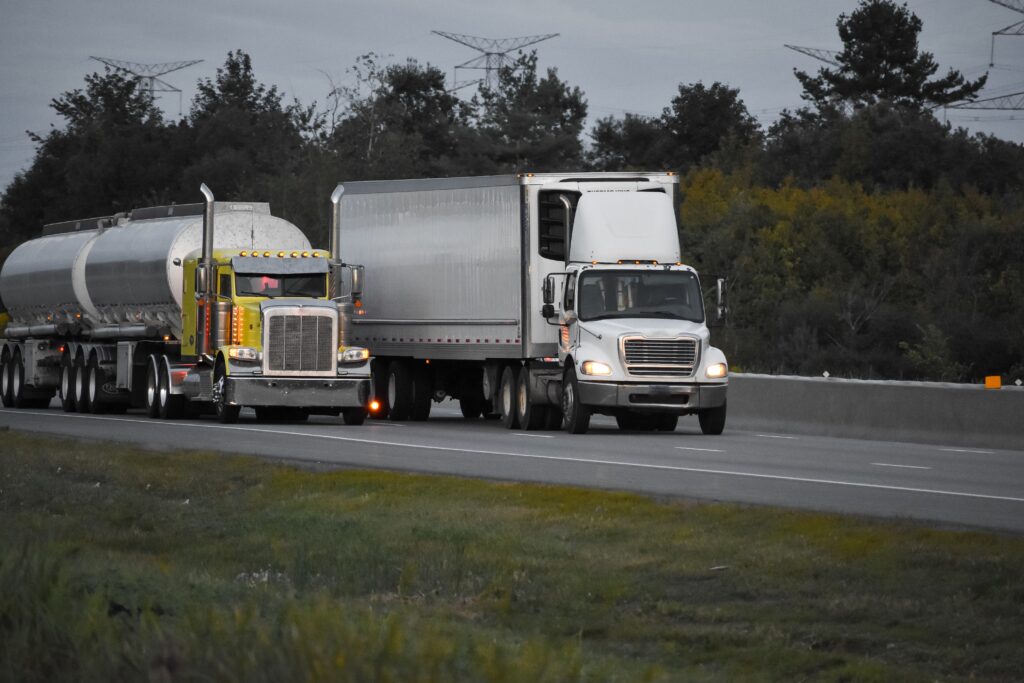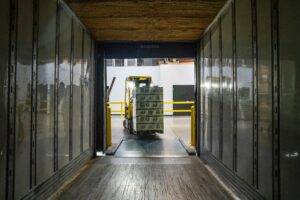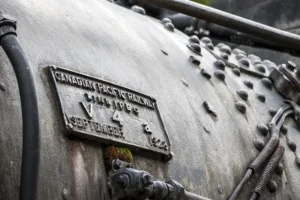The actual process of intermodal transport is far more elusive and convoluted than its name would suggest. It’s when a single load of products in a steel container is moved using many modes of transportation. Intermodal transportation uses a wide variety of transport options, including trains and trucks. You can classify intermodal transportation by truck, rail, sea, or air. Steel cargo containers are easily moved by trucks. Freight trains are the backbone of the intermodal shipping system and the primary form of transportation used to kick things off.
Furthermore, trucks are often the very last method of transportation to handle the freight before it reaches its destination. And within the realm of multimodal transport, trains prove to be the most profitable mode. Transporting hundreds of steel containers over thousands of miles by train is inexpensive. However, only shipping by air and sea can transport cargo containers between continents and across oceans and other bodies of water.
Intermodal transportation has a smaller carbon footprint and a growing list of advantages, such as facilitating faster free trade and lower costs for consumers and economies. Some shippers can opt for alternate strategies because of the drawbacks of intermodal transport, despite its many benefits. In the future, intermodal transportation will develop further, increasing productivity and presenting new options for cargo transit. However, many people need an in-depth understanding of intermodal transport, which is why we have compiled this guide. Keep reading this post for more on intermodal and when it’s appropriate to use it.
What is Intermodal Transportation?
Freight that travels between A and B using multiple modes of transportation is said to be “intermodal.” There is a separate provider and agreement for each of these transportation options. Different ways of transportation, such as trains, planes, trucks, and even barges, work together to accomplish this mission along the same route. A Carrier of this sort provides travel options by air, land, water, and sea (cargo). All stakeholders have agreed to move the products from A to B.
Transportation companies are responsible for picking up products from factories and delivering them to consumers. Customers will have access to the supply chain’s preferred long-distance transport options, such as trains, planes, and boats. After that, a vehicle will take the cargo the rest of the way from the terminal or port to its ultimate location. Increasingly, corporate social responsibility is becoming an issue of concern, and intermodal rail/road transport is one way to address this (CSR). This approach positively impacts the environment since it encourages rail transportation for vast distances rather than the more polluting alternatives of boats and planes.
Diversification of Logistics & Supply Chain Strategy
Diversification is a must whether you’re a business owner or a supply chain manager. Practitioners of the supply chain diversify their proprietary and outsourced logistics assets, both internationally and domestically, to lay off risk, reduce costs, and create a more reliable delivery flow for their customers, much like skilled arbitrageurs who hedge investments to mitigate risk. And allow for modest portfolio growth by taking advantage of small value increases in other areas.
International shippers must diversify their routes and modes of transport to save costs and better manage risk. Numerous U.S. recipients no longer rely on suppliers in a single foreign country to provide for their needs. Instead, they incorporate secondary and even tertiary sourcing strategies into their global architecture, invest in inventory management technology and reevaluate their deferral tactics to avoid potential transportation bottlenecks and zero in on the lowest possible total landing cost.
Consignees considering receiving international shipments are exploring the possibility of routing their goods through numerous entry points to reduce the likelihood of delays caused by congestion at crucial entry points. And better prepare for and respond to any potential supply chain disruptions.
How Shipper Demands Play Well into Intermodal
Any shipment that begins or ends within two hundred to three hundred miles of a central metropolitan area is a prime candidate for intermodal transport, combining the journey’s maritime leg with a drayage or trucking transfer. This type of transport combines the benefits of both modes of transportation into one seamless journey . Drop and pick chassis costs are less than living unload trucking service fees, which is especially advantageous for cargoes that expect lengthy loading delays, such as a day or more. Drop and pick chassis rates are less than live unload trucking service expenses.
Rail transport is the mode that comes to most people’s minds first when the phrase “intermodal shipping” is stated. However, intermodal shipping includes not just trains and barges but also trucks, ocean vessels, air freight, road freight transport solutions and other modes of transportation. The fact that experts in the field frequently place railroads and intermodal in the same vertical is the best indicator that a comprehensive understanding of the benefits of this mode of transport begins with railroads. This is because intermodal and railroads are often placed the same vertically.
Unlike total truckload shipping, which involves one carrier moving a load from its origin to its destination, intermodal cargo moves in three distinct parts using three separate carriers.
There are three components to an intermodal shipment.
- Part 1. Road
An empty container is picked up from the origin rail ramp by a drayman or drayage carrier and delivered to the shipper. The drayman will return the container to the train ramp once loaded at the shipper.
- Part 2. Rail
The rail/road transport container between the starting and finishing rail ramps.
- Part 3. Road
The drayage company at the recipient’s location will pick up the container from the terminal’s loading dock.
When Should you use Intermodal Transportation?
Freight transportation that employs more than one method of transport is called “intermodal.” Transport by OTR (over-the-road) trucks, rail, and ship are all options. Moving your shipment from one mode to another may appear hard initially, but it can help you save time, money, and resources. Drainage from a warehouse to a rail ramp, for instance, can help you save time and money because trains are less likely to be delayed in traffic and consume less fuel than trucks.
But the question is, “How can you determine if intermodal is the most cost-effective means of transporting my load?” We’ve compiled a list of situations where using intermodal services is preferable over drayage services alone for transport.
1. Long Distances
In need of cross-country shipping? If that’s the case, intermodal transport is an excellent option for reducing fuel expenditures that would otherwise add up quickly if a long-haul carrier were used. Longer distances are better served by rail. Doing so saves money on gas and time in your daily routine.
2. Several Containers
To save time, energy, and materials, shipping freight by rail is another viable method for transporting large quantities of cargo. Containers are pulled by trains in bulk.
3. High-Value Freight
High-value shipments, such as electronics or medications, are especially vulnerable to cargo theft. The risk rises if freight is transported exclusively by truck. Intermodal transportation keeps cargo on the move, making it less likely to be stolen. When placed on a train, the containers are locked and monitored constantly.
4. Flexible Timeline
Intermodal shipping is economical when both the delivery time and cost may be adjusted. Generally speaking, intermodal transport times are longer. It is essential to have the foresight to anticipate potential obstacles and quickly adapt to them.
In a Nutshell
When it comes to moving large amounts of material across long distances swiftly and cheaply, intermodal transportation is rising to the top of the list. It’s a cost-effective and dependable shipping option that cuts down on fuel consumption and waste. Your long-distance loads and supply chain could both profit from this. If you’re interested in using or learning more about intermodal transportation services. You can count on I-Way Transport Inc. as we are the best international shipping company that provides the best transportation services possible.




